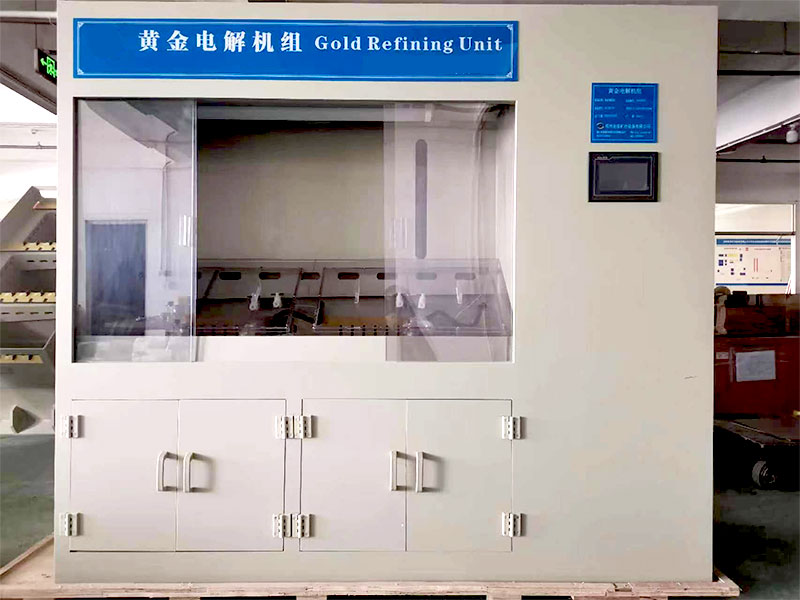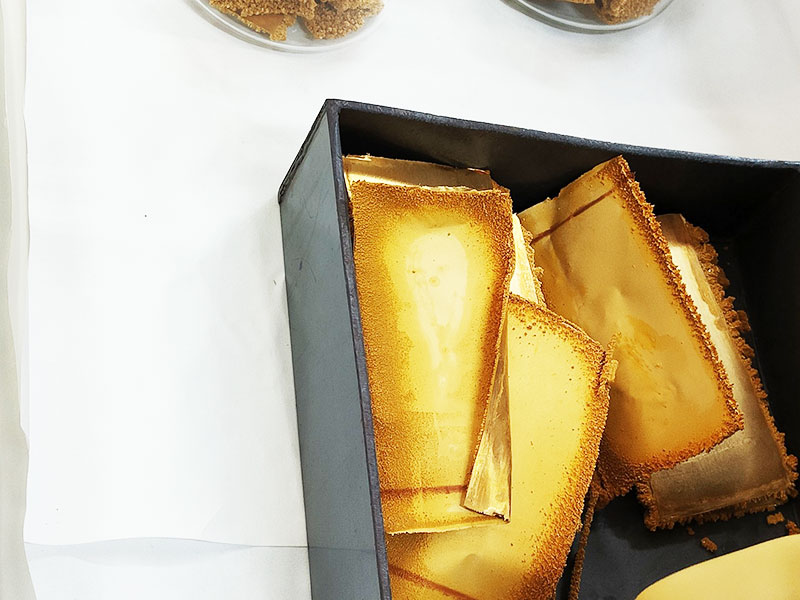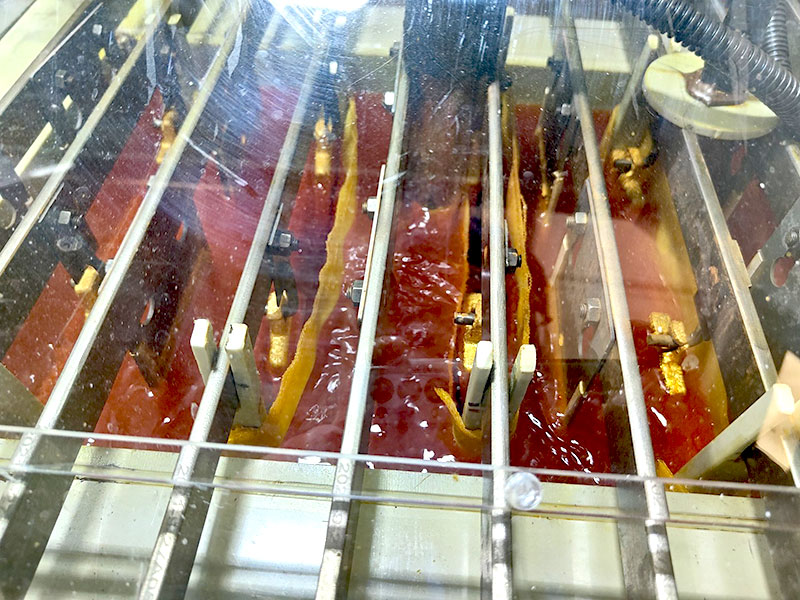Gold Refining



1. Chemical method: The chemical method and chemical gold dissolution reduction process use gold dissolving reagents to dissolve gold, and then add reducing agents to selectively precipitate gold to achieve the purpose of purifying gold. The traditional methods of gold chemical dissolution are aqua regia dissolution and controlled electrochlorination dissolution, and the solvents include aqua regia, chlorine, sodium chlorate, etc. The main gold dissolving reaction is: Au+HNO3+3HCl→AuCl3+NO+2H2O and 2Au+ClO3+6H+7Cl→2AuCl4+3H2O
The aqua regia method for gold purification is suitable for materials with a silver content of less than 8%. The silver is separated by silver chloride precipitation. The gold mixture is quenched into powder or filtered electrolytic gold mud, placed in a heat-resistant glass container or a polypropylene plastic container, and 3 to 4 parts of aqua regia are added in batches for each part of gold. Dissolve under heating, let it stand and filter after dissolution, then concentrate and drive out nitrate, and then reduce it with sodium sulfite, ferrous sulfate or oxalic acid to obtain sponge gold. The sponge gold is washed, then soaked twice with dilute nitric acid, washed to neutral, dried and then cast into ingots, which can purify gold to 99.9% or higher. In addition to the advantages of low investment and short production cycle, this process has the advantages of low investment and short production cycle. However, the following issues should be noted when purifying gold with aqua regia method:
In order to dissolve gold quickly, the raw material must have a large surface area and be highly dispersed;
The silver content of the material must be low. High-silver materials (silver mass fraction greater than 8%) are prone to cause the generated silver chloride to cover the gold surface, making it difficult for gold to dissolve;
Aqua regia dissolution produces a large amount of nitrogen oxide smoke, which requires gas collection and purification to meet relevant environmental protection requirements before it can be discharged.
2. Electrolysis: The raw materials for the electrolysis method generally require crude gold with a gold mass fraction of more than 90%. The crude gold is cast into an anode, pure gold or titanium plate is used as a cathode, and chloroauric acid aqueous solution and free hydrochloric acid are used as electrolytes. During the gold electrolytic refining process, gold dissolves from the anode to form Au3+ ions, which move to the cathode for discharge and precipitation and deposition on the cathode. When the specified degree is reached, the cathode is removed and purified for ingot treatment, and its gold purity is above 99.99%.
As the electrolysis process proceeds, various impurity elements with lower electronegativity than gold also dissolve into the solution with the electrochemical reaction, but their concentration is very low and will not precipitate at the cathode. Harmful impurities in the anode are silver and copper. If the silver content is too high, the silver chloride formed after electrochemical dissolution will adhere to the surface of the anode, causing anode passivation. This is more serious when the silver content of the anode exceeds 6%. To eliminate this effect, during gold electrolytic refining, direct current is input into the electrolytic cell while alternating current is also input to form an asymmetric pulsating current to eliminate the influence of silver. If the copper content is too high, it will precipitate at the cathode and affect the quality of electrolytic gold. Therefore, the copper content in the anode should not exceed 2%. Fresh electrolyte is obtained by dissolving gold. There are two methods for making liquid: aqua regia method and electrolysis method. The reduction precipitation method is used to recover gold from waste electrolyte. If the impurity content in the incoming material is high, the electrolyte must be regenerated frequently or the excessive impurities in the incoming material must be removed in advance.
This process has the advantages of stable process, easy control, low pollution, and low labor intensity, but it has the advantages of long production cycle (2-3 times that of chemical refining) and large electrolyte gold pressure (10kg/d gold electrolysis, the total pressure of gold in the electrolyte is about 4kg)

